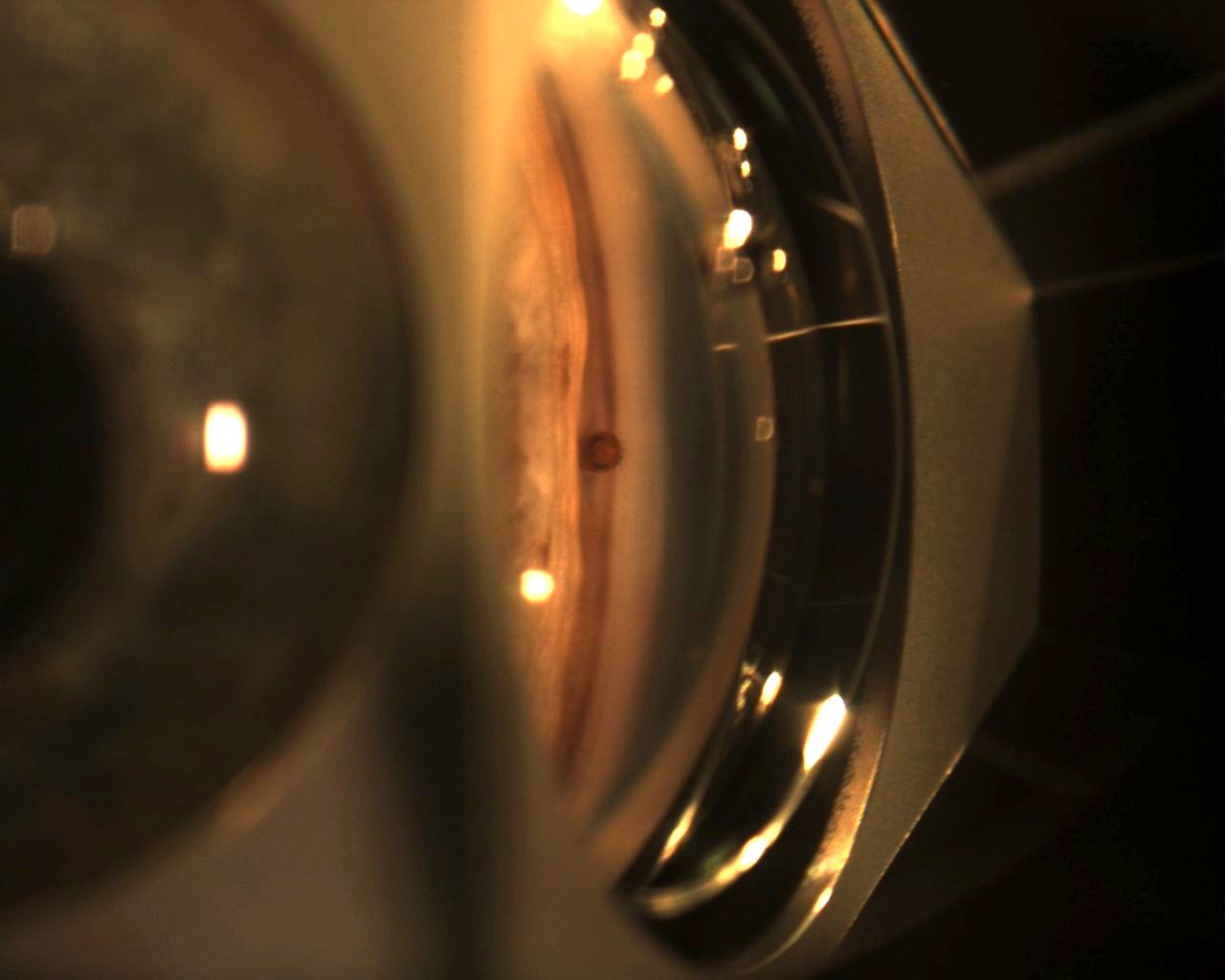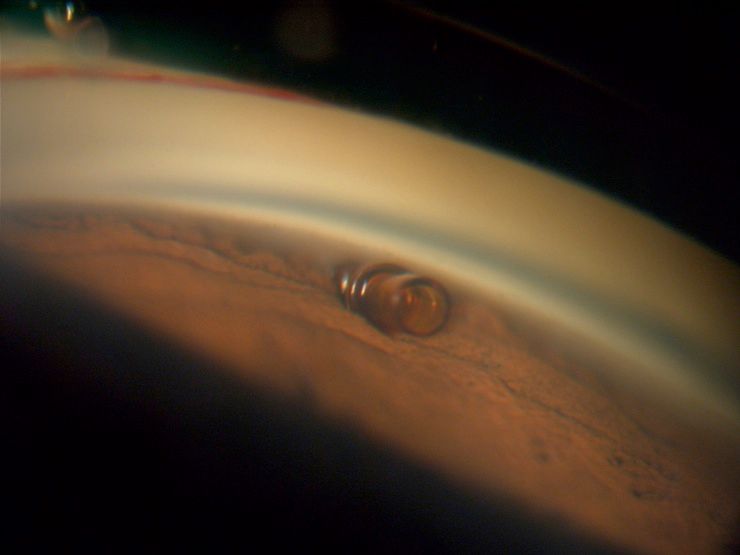Article
MIGS making big difference in glaucoma management
Microinvasive glaucoma surgery devices already have transformed the management of glaucoma and will have a bigger impact in the future considering the options in the investigational pipeline and the opportunities they present.
Microinvasive glaucoma surgery (MIGS) with the trabecular micro-bypass stent (iStent, Glaukos) already has transformed the management of glaucoma and will likely have a bigger impact in the future considering the options in the investigational pipeline and the opportunities for their use, said Steven D. Vold, MD.
“The trabecular micro-bypass stent has been an exciting breakthrough product that soon after its introduction surpassed trabeculectomies and tubes in combined cataract-glaucoma surgery procedures,” said Dr. Vold, who is in private practice in Fayetteville, AR. “However, this first MIGS device is just the beginning.”
Dr. Vold added that other devices in the pipeline are providing promising results for patients across a range of glaucoma severity. He presented his observations during the Glaucoma Symposium CME at the 2016 Glaucoma 360 meeting.
“Through MIGS, we are improving our understanding of aqueous outflow, which is enabling the development of more effective technologies and techniques,” Dr. Vold pointed out. “We can look forward to using MIGS implants with drug delivery to hopefully achieve long-lasting results or with sensors for round-the-clock intraocular pressure (IOP) monitoring.”
MIGS devices that have completed or are being evaluated in U.S. clinical trials include next-generation trabecular micro-bypass stents (Hydrus, Ivantis; iStent Inject, Glaukos), uveoscleral microstents (CyPass Micro-Stent, Transcend Medical; iStent Supra, Glaukos), and subconjunctival implants (Xen45, Allergan/AqueSys; MicroShunt, InnFocus). Dr. Vold focused on the CyPass Micro-Stent and Xen45 implants, which seem to be the closest to commercial availability in the United States.
Harnessing uveoscleral outflow
Harnessing uveoscleral outflow
He described the CyPass as a potential game-changer because of the ease of the surgery.
“Implanted using a non-perforating ab interno approach, this device is placed at the base of the scleral spur and slides nicely into the subconjunctival space,” Dr. Vold said. “For surgeons who are not very facile with placement of the iStent or who have not done a lot of angle surgery, the CyPass might be a good alternative.”


Figures 1 and 2. This is the proper placement for the CyPass Microstent. Courtesy of Steven Vold, MD
The mechanism of action of the CyPass, which increases aqueous outflow through the uveoscleral pathway, makes it appealing considering new understanding about the role of uveoscleral outflow in determining IOP. It also accounts for the magnitude of IOP-lowering efficacy being achieved with this procedure.
“Although it was once thought that uveoscleral outflow comprised only about 10% of aqueous drainage, we now know it contributes more than 50%,” Dr. Vold explained. “That explains why prostaglandin analogues produce such profound IOP lowering.
“Tapping into the uveoscleral outflow pathway also bypasses Schlemms canal and collector channels, which may be atrophic in patients with glaucoma,” he added. “All of these factors suggest the potential for significant IOP lowering with the CyPass.”
He said investigations in the future might include multiple CyPass devices or combining it with endoscopic cyclophotocoagulation or with a trabecular bypass procedure.
Promising technology
Clinical trial results show the CyPass is promising technology, Dr. Vold said. In the CyCle study, IOP at 2 years was lowered 35% from a baseline mean of 25.5 mm Hg in patients who received the CyPass combined with cataract surgery.
Results of the DUETTE study involving patients with medication-refractory glaucoma who underwent CyPass implantation alone showed that at 12 months, IOP was reduced by 32% from the baseline mean of 24.5 mm Hg. The IOP-lowering benefits in both trials were achieved with significant reduction in use of topical medications.
The U.S. pivotal trial investigating the CyPass, known as COMPASS, is the largest randomized controlled trial of a glaucoma implant, and the study stands out for its rigor. Its design includes terminal washouts at 12 and 24 months, strict criteria for restarting medications, analyses of endothelial cell density as a safety measure, and a strong primary endpoint-diurnal unmediated IOP change at 2 years.
“We now have some patients with follow-up to 5 years, and based on my clinical observations, I am impressed with the longevity of the results,” Dr. Vold said.
Microinvasive filtering surgery
Based on the observation of an aqueous lake posterior to and around the CyPass micro-stent in implanted eyes and the finding that the size of this subscleral lake correlated with IOP outcomes, implantation of the CyPass is also being combined with injection of viscoelastic to the supraciliary and suprachoroidal spaces. The purpose for establishing this space to achieve and maintain enhanced aqueous outflow.
“The goal is to potentially increase the magnitude of IOP lowering that would allow use of the CyPass in patients with more advanced glaucoma,” Dr. Vold said. “In addition, anti-VEGF or anti-inflammatory agents might be injected into this space as a means for treating neovascular or other inflammatory glaucomas.
“Results with the viscoelastic injection so far are very promising and we expect to begin a study investigating it in patients with refractory glaucoma,” he added.
Microinvasive filtering surgery
Implantation of the Xen45 stent is a tissue-sparing, filtering procedure performed via an ab interno approach that keeps future surgical options available. Constructed of a soft porcine gelatin material that is crosslinked with glutaraldehyde, the stent conforms to ocular tissues and appears to minimize the potential for such implant-related complications as inflammation, migration, and erosion.
The implantation is quick and easy as the device is preloaded on a disposable IOL-like injector. It can be done as a stand-alone surgery or in combination with phacoemulsification.
“Hopefully, this procedure will provide IOP-lowering comparable to trabeculectomy but with a better safety profile,” Dr. Vold said. “In the United States, it is being studied in refractory patients who have already had filtering surgery, other incisional procedures, or cyclophotocoagulation, but it has been shown to be very effective in combined cataract surgery and as a stand-alone primary surgery in open angle patients in European experience.”
The design of the stent has evolved over time, and it now features a reduced inner lumen size of 45 µm that is proving helpful for reducing hypotony rates without sacrificing IOP lowering. Data from about 700 patients implanted with the Xen45 stent show IOP lowering of about 40% from baseline at 1 year (1-year mean 13.2 mm Hg) with about an 85% reduction in medication use.
“We now have data from follow-up to 3 years that shows sustained efficacy,” Dr. Vold said.
Steven Vold, MD
e. svold24@gmail.com
Dr. Vold is a consultant to Glaukos and Transcend Medical and on the Speakers’ Bureau for Allergan. He also is or has recently served as a consultant for Alcon Laboratories, Ivantis, AqueSys, and InnFocus.
Newsletter
Don’t miss out—get Ophthalmology Times updates on the latest clinical advancements and expert interviews, straight to your inbox.




